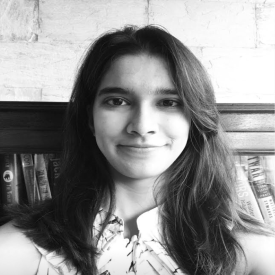How class and caste influence school choice
Families' socioeconomic status impacts how parents make decisions regarding their children's education. Taking into account the interplay of caste and class, this paper finds that when families are to...
- Articles
A permanent cordon-sanitaire: Dalits and Muslims in urban India
Near-perfect segregation and hierarchical ordering of residential space, based on caste or religious identity, is a well-known feature of rural India. Studies have also documented the persistence of s...
-
 Naveen Bharathi
Naveen Bharathi  Deepak Malghan
Deepak Malghan  Andaleeb Rahman
Andaleeb Rahman  09 October, 2020
09 October, 2020
- Articles
Are women politicians good for economic growth?
There has been a phenomenal global increase in the proportion of women in politics in the last two decades, but there is no evidence of how this influences economic performance. This article investiga...
-
 Sonia Bhalotra
Sonia Bhalotra  05 December, 2018
05 December, 2018
- Articles
Political reservation in India: The effect on poverty
Over the last 60 years, India’s Constitution has set aside seats in parliament for people from historically discriminated groups, the Scheduled Castes and Scheduled Tribes. This column documents one...
-
 Nishith Prakash
Nishith Prakash  10 December, 2012
10 December, 2012
- Articles
Where have all the young girls gone? The rise in female foeticide in India
Gender inequality remains a huge issue in India and policies aimed at changing this are welcome. But this column finds that an unintended consequence of the introduction and spread of ultrasound scans...
-
 Sonia Bhalotra
Sonia Bhalotra  07 November, 2012
07 November, 2012
- Articles
What explains gender disparities in economic participation in India?
The UN Global Gender Gap data shows that women’s economic participation and opportunity is worse in India than in 95% of all other countries studied. This column attempts to uncover what drives the ...
-
 Ejaz Ghani
Ejaz Ghani  William Kerr
William Kerr  Stephen D O'Connell
Stephen D O'Connell  21 August, 2012
21 August, 2012
- Articles
The persistence of caste in India: An economic explanation
Despite many efforts by the government and by civic institutions, the caste system continues to have a firm hold on Indian society. This column presents an economic explanation for this persistence an...
-
 Kaivan Munshi
Kaivan Munshi  16 July, 2012
16 July, 2012
- Articles
Does Female Leadership Impact on the Quality of Public Goods? Evidence from a Public Poverty Alleviation Programme in Andhra Pradesh, India
This project used the nationwide policy of randomly allocating village council headships to women to identify the impact of female political leadership on the governance of projects implemented under ...
-
 Farzana Afridi
Farzana Afridi  Vegard Iversen
Vegard Iversen  M.R. Sharan
M.R. Sharan  01 April, 2012
01 April, 2012
- IGC Research on India
Belief Formation of the Returns to Schooling and How to De-Bias Incorrect Beliefs
This project investigates how poor households in rural and urban Rajasthan form beliefs about the value of additional years of schooling.
-
 James Berry
James Berry  Lucas Coffman
Lucas Coffman  31 March, 2012
31 March, 2012
- IGC Research on India
Twitter feed
Tweets by Ideas4IndiaMost Popular Social Identity Posts
A division of labourers: Caste identity and efficiency in India
Castes in India are closely associated with certain occupations and determine the jobs done by millions. This study uses a new dataset to show that a large proportion of workers still work in their ca...
 Guilhem Cassan
Guilhem Cassan  Daniel Keniston
Daniel Keniston  Tatjana Kleineberg
Tatjana Kleineberg  18 November, 2022
18 November, 2022
- Articles
Hindu-Muslim fertility differentials in India: An update
Building on past research, Saswata Ghosh and Pallabi Das estimate the state- and district-level fertility differentials between Hindus and Muslims using data from the latest round of the NFHS. They sh...
 Pallabi Das
Pallabi Das  Saswata Ghosh
Saswata Ghosh  18 April, 2023
18 April, 2023
- Articles
Sex ratios and religion in India and South Asia
In South Asia, low child sex ratios are increasingly an isolated Indian phenomenon. Within India, child sex ratios are ‘normal’ among Christians and Muslims but much lower among Hindus, Sikhs, and...
 Swati Narayan
Swati Narayan  03 April, 2019
03 April, 2019
- Articles





 04 March, 2024
04 March, 2024






